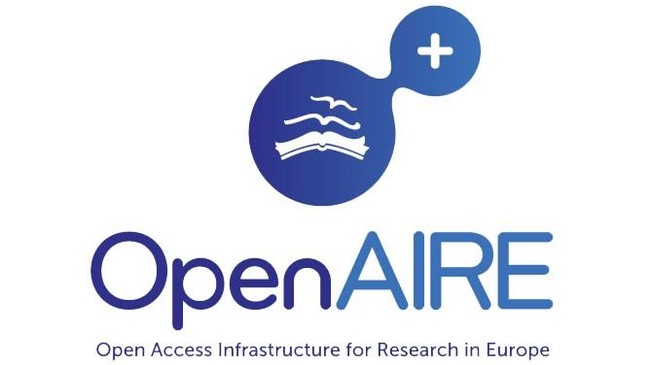PENGARUH DOPING DAN PERLAKUAN PANAS TERHADAP KEKERASAN KERAMIK PADA BAHAN DASAR PEMBUATAN POCI
DOI:
https://doi.org/10.21009/03.SNF2020.01.FA.16Abstract
Abstrak
Poci yang termasuk dalam keramik memiliki kekurangan karena mudah pecah. Beragam cara telah dilakukan untuk meningkatkan kekerasan poci. Salah satu hal yang dilakukan adalah dengan menambah doping dan melakukan perlakuan panas. Perlakuan panas yang dapat dilakukan adalah dengan melakukan variasi suhu pemanasan, lamanya waktu pemanasan, hingga variasi laju pemanasan. Tujuan paper ini adalah mengetahui pengaruh penambahan doping dan perlakuan panas terhadap tingkat kekerasan keramik. Metode yang digunakan adalah studi literatur terhadap penelitian terkait. Hasil yang didapat adalah keramik akan semakin keras bila ditambahkan dengan material tertentu namun kekerasan akan berkurang setelah melebihi komposisi optimumnya. Hal yang sama didapatkan pada perlakuan panas, sekamin lama dan semakin tinggi suhu akan menigkatkan kekerasan keramik sampai batas optimumnya. Hasil ini akan digunakan untuk menentukan komposisi dan suhu yang paling optimumdalam memperkuat keramik.
Kata-kata kunci: Poci, Keramik, Suhu, Doping, Kekerasan
Abstract
The pot that is included in ceramics has a disadvantage because it breaks easily. Various ways have been done to increase pot hardness. One of the things done is to add doping and heat treatment. The heat treatment that can be done is to vary the heating temperature, the length of time for heating and the variation of the heating rate. The purpose of this paper is to determine the effect of the addition of doping and heat treatment on the level of hardness of ceramics. The method used is the study of literature on related research. The results obtained are ceramics that will be harder when added to certain materials, but the hardness will decrease after exceeding its optimum composition. The same thing is found in heat treatment, long time and higher temperature will increase the hardness of ceramics to the optimum. This result will be used to determine the optimum composition and temperature for strengthening ceramics.
Keywords: Pot, Ceramic, Temperature, Doping, Hardness
References
[2] R. S. Mishra et al., “High-pressure sintering of nanocrystalline γ-Al2O3,” Ceram, vol. 79, pp. 2989-2992, 1996, doi: https://doi.org/10.1111/j.1151- 2916.1996.tb08741.x.
[3] F. M. Liu et al., “Bimodal transparent alumina ceramics prepared with micro/nano-particles under high pressure,” Scr. Mater, vol. 122, pp. 54-58, 2016, doi: https://doi.org/10.1016/j.scriptamat.2016.05.017.
[4] A. M. Daifullah, B. Girgis and H. M. Gad, “Utilization of Agro Residues (Rice Husk) in Small Waste Water treatment Plants,” Mater. Lett, vol. 57, pp. 1723-1731, 2003.
[5] M. N. Rahaman, “Sintering of Ceramics,” CRC Press Taylor Fr. Gr, 2008.
[6] Ramlan and A. A. Bama, “Pengaruh Suhu dan Waktu Sintering terhadap Sifat Bahan Porselen untuk Bahan Elektrolit Padat (Komponen Elektronik),” Penelit. Sains, vol. 14, pp. 22-25, 2011.
[7] Ramlan, “Pengaruh MgO dan Suhu Sintering Terhadap Mikrostruktur dan Sifat Fisis Keramik Beta,” Universitas Indonesia, 2001.
[8] J. S. Reed, “Introduction to the Principles of Ceramic Processing,” John Wiley & Son, pp. 583-598, 1995.
[9] N. V. Mohan, P. P. V. Satyanarayana, and K. S. Rao, “Performance Of Rice Husk Ash Bricks,” Int. J. Eng. Res. Appl, vol. 2, pp. 1906-1910, 2012.
[10] S. Husain, N. H. Haryanti, and T. N. Manik, “Pengaruh Suhu Sintering Terhadap Sifat Mekanik Keramik Berbahan Lempung dan Abu Sekam Padi,” Fis. FLux, vol. 13, pp. 1-10, 2016.
[11] C. V. Lazaratou, D. V. Vayenas and D. Papoulis, “The role of clays, clay minerals and clay-based materials for nitrate removal from water systems: A review,” Appl. Clay Sci, p. 105377, 2019, doi: 10.1016/j.clay.2019.105377.
[12] H. U. Jamo and S. G. Abdu, “Structural Analysis And Aurface Morphology Of Quartz,” Bayero J. Pure Appl. Sci, vol. 9, no. 2, pp. 33-37, 2014, doi: 10.4314/bajopas.v9i2.40.
[13] L. Lestari et al., “Evolusi Mikrostruktur Dari Keramik Paduan Silika (SiO2) dan Alumina (Al2O3),” Apl. Fis, vol. 13, pp. 1-6, 2017.
[14] K. A. Khalil and S. W. Kim, “Effect of Processing Parameters on the Mechanical and Microstructural Behavior of Ultra-Fine Al2O3- (ZrO2+8%Mol Y2O3) Bioceramic, Densified By High Frequency Induction Heat Sintering,” Int. J. Appl. Ceram. Technol, vol. 3, pp. 322-330, 2006.
[15] D. Jiang et al., “Spark plasma sintering: a high strain rate low temperature forming tool for ceramics,” Mater. Sci. Eng. A, vol. 463, pp. 89-93, 2007.
[16] K. A. Khalil, “Advanced Sintering of Nano-Ceramic Materials,” 2014, doi: 10.5772/38287.
[17] J. Zhao and X. Wang, “Advanced Ceramics for Dentistry,” Elsevier Inc, pp. 23-48, 2014.
[18] J. Y. Thompson, S. C. Bayne and H. O. Heymann, “Mechanical properties of a new mica-based machinable glass ceramics for CAD/CAM restorations,” J. Prosthet Dent, vol. 76, pp. 19-23, 1996.
[19] E. E. Meliegy and R. V. Noort, “Machinable Mica Dental Glass-Ceramics, in: Glasses and Glass Ceramics for Medical Applications,” Springer Inc., New York, pp. 192–208, 2012.
[20] Kuntajinda, “Residual Strain Adjustment to Enhance Machinable Glass-Ceramics Forming As A Restorative Dental Material Using CAD/CAM System,” Kasetsart University, 2011.
[21] T. Srichumpong et al., “Effect of Heat Treatment Time on Properties of Mica-Based Glass-Ceramics for Restorative Dental Materials Effect of Heat Treatment Time on Properties of Mica-Based Glass- Ceramics for Restorative Dental Materials,” Eng. Mater, 2016, doi: 10.4028/www.scientific.net/KEM.702.23.




